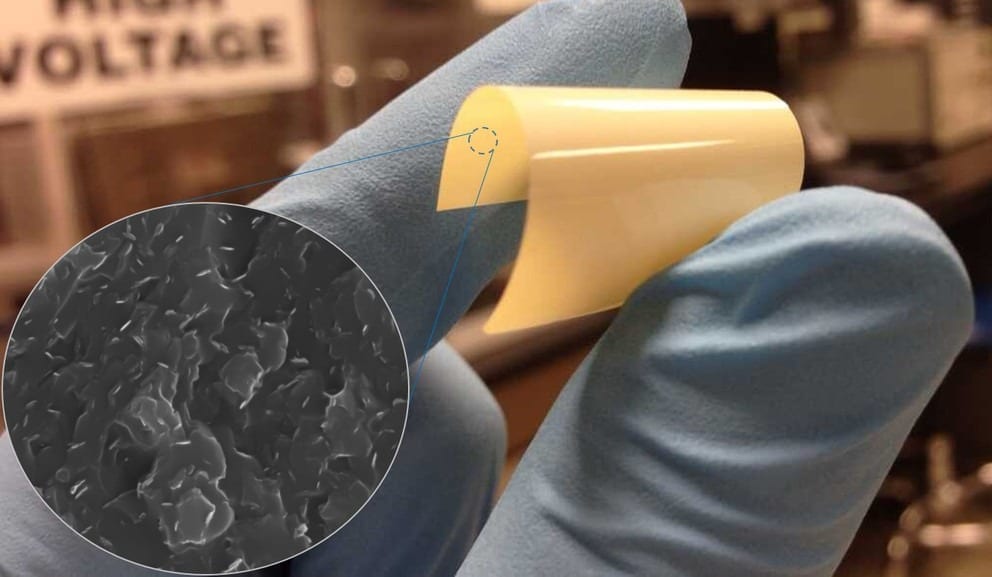
The dull black plastic of the device on Joshua Pearce’s desk belies its usefulness.
Pearce picks up the box, which has a switch on the side and a small opening on top. A handful of vials sit in a bag nearby, and each would fit snugly in the opening.
The set-up seems generic, even bland, except that it could radically change how we deal with water quality issues.
Pearce, who has a joint appointment as an associate professor of materials science and engineering as well as electrical and computer engineering, runs an open sustainability technology lab at Michigan Technological University. Along with his students, Pearce made the handheld device with a 3-D printer and open source hardware in collaboration with the Nitrate Elimination Company, Inc. (NECi). The small machine replaces comparable devices that cost more and rely on old methods based on cadmium or zinc. The idea is to create better tools for testing nitrate content in water and soils. This week, PLOS ONE publishedthe team’s research on the device.
Nitrate and Water Quality
High nitrate levels in water cause the dead zones in the world’s largest deltas. Using too much nitrogen fertilizer wastes resources and leads to nitrate in runoff and water wells and an excess of nitrate in drinking water is a health hazard to infants and harmful to many animals. Current portable nitrate testers range in price and accuracy, from ballpark data at low price points to several hundred dollars for a handheld photometer. This new design is palm-sized, interfaces with a free Android app, costs less than $65 to manufacture and uses green chemistry for a safer and more accurate testing procedure.
“This is a Popeye-approved reagent methodology,” Pearce jokes, adding that the enzyme used in the test kit is found in spinach and other leafy greens. “We’re replacing a toxic heavy metal with something that you eat every day in your salad.”
Kale and collards aside, Pearce is serious about how the enzyme, called nitrate reductase, makes for a better device since NECi considers the chemical processing from sourcing to disposal. The PLOS ONE paper is a validation study, and, Pearce says, the device not only works, it “performs as well as commercial proprietary systems for less than 15 percent of the cost for materials and is 100 percent open source.”
Having freely available hardware and software is only part of what makes this new nitrate test kit an improvement in the industry.
Read more: Making a Better Nitrate Test Kit
The Latest on: Nitrate Test Kit
[google_news title=”” keyword=”Nitrate Test Kit” num_posts=”10″ blurb_length=”0″ show_thumb=”left”]
via Google News
The Latest on: Nitrate Test Kit
- 27 AAPI Brands To Shop This Month And Beyondon May 9, 2024 at 6:02 am
From Korean serums to Vietnamese cold brew, these Asian and Pacific Islander-owned brands are a celebration of the diverse Asian continent.
- Learn how to test your private well at free June 3 eventon May 7, 2024 at 5:47 am
Lancaster County residents can learn how to test the water in their private well and receive one free testing kit at an educational event hosted by the Penn State Extension ...
- Senate expected to pass $3 million nitrate treatment package for southeastern MNon May 6, 2024 at 2:19 pm
The Minnesota Senate is expected to approve $3 million in one-time funding to address nitrate pollution in southeastern Minnesota. Nitrate pollution is often the result of farm fertilizer runoff. The ...
- Private well owners remind to test for potential contaminantson May 5, 2024 at 10:00 pm
The Illinois Department of Public Health (IDPH) and the Illinois State Water Survey (ISWS) are reminding Illinois private well owners to properly maintain their wells and recommend that ...
- Chemist explores the real-world science of Star Warson May 3, 2024 at 8:25 am
A professor at the University of Warwick is exploring the chemistry of the galaxy far, far away this Star Wars Day, May the 4th.
- The 7 Best Pool Test Kits, According to Our Testingon May 2, 2024 at 8:54 pm
Pool water should be clean, clear, and safe to swim in, but without checking the content of the water with a pool water test kit, it’s not possible to know whether the chlorine level is too high ...
- Illinois Health Officials Urge Private Well Owners to Test Water Quality Regularlyon April 30, 2024 at 1:34 pm
Illinois health officials advise private well owners to test water quality regularly to prevent contamination.
- Waikato DairyNZ Farmwatch: Nitrate poisoning risk increaseon April 22, 2024 at 10:06 pm
Test kits are available at your vet’s - if nitrate levels are above 1 per cent do not feed. Sunshine will reduce nitrate levels as the plants photosynthesise. Do not put stock onto high-risk ...
- 10 Best Aquarium Test Kitson April 19, 2024 at 4:59 pm
Contains one (1) API FRESHWATER MASTER TEST KIT 800-Test Freshwater Aquarium Water ... ammonia, nitrite, nitrate Designed for use in freshwater aquariums only Use for weekly monitoring and when ...
- State of Nebraska asking private well owners to return nitrate test kitson March 8, 2024 at 1:08 pm
LINCOLN, Neb. (WOWT) - The Nebraska Department of Environment and Energy is encouraging private well owners who requested free nitrate sample kits to test drinking water to return those kits to ...
via Bing News










